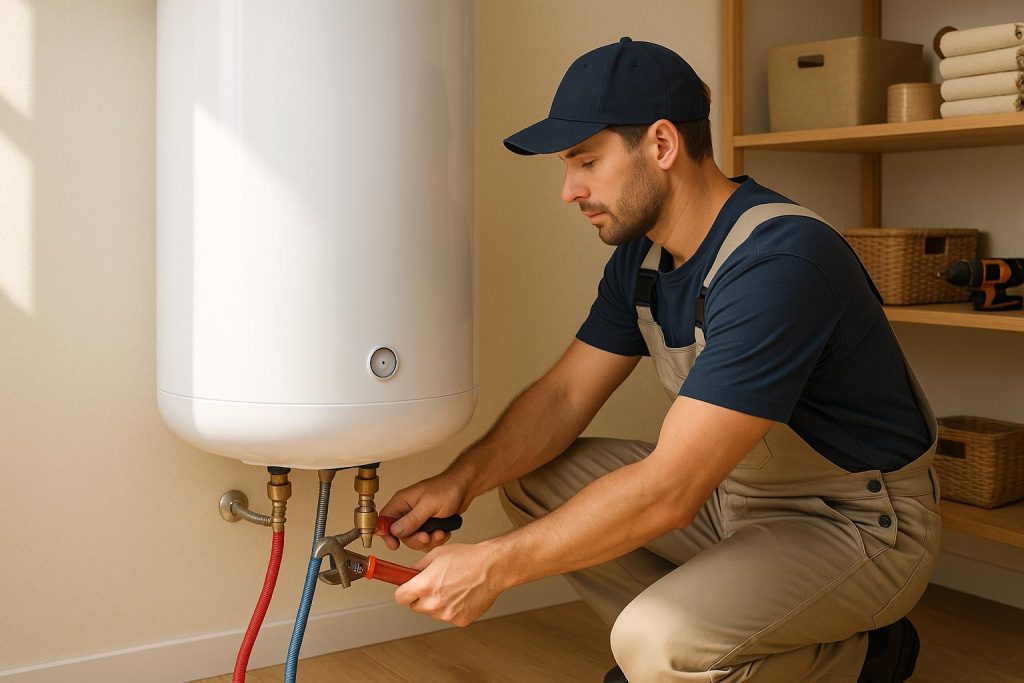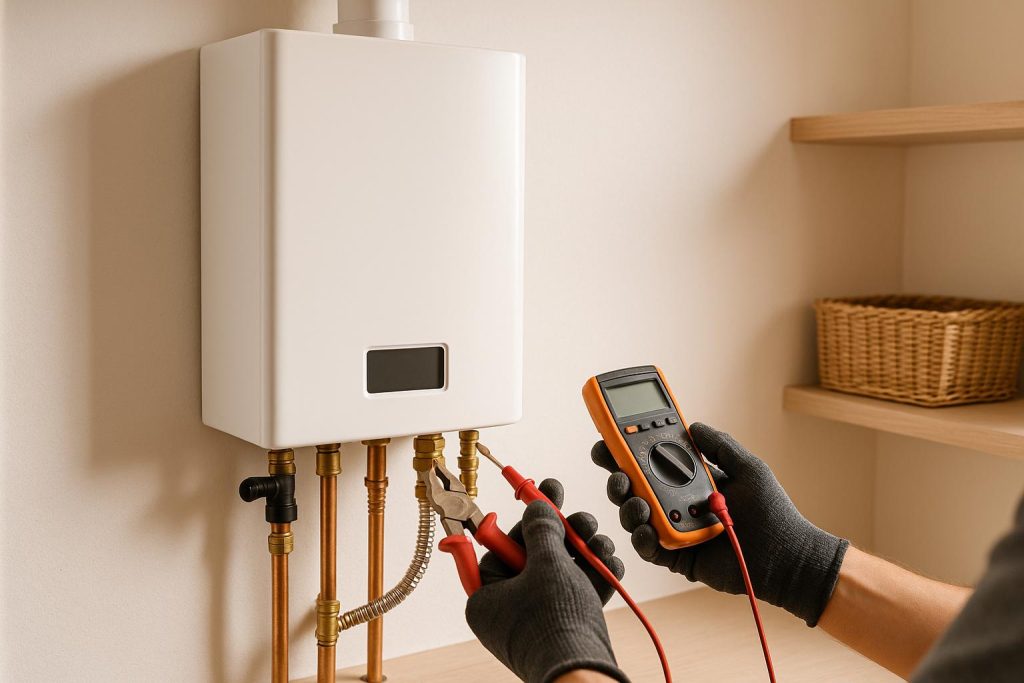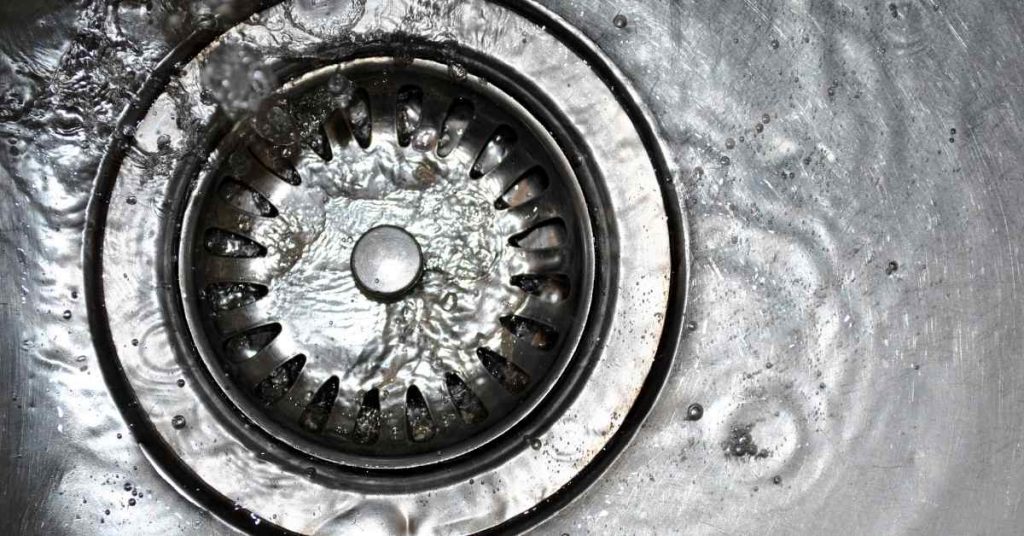
Unclogging a slow drain is a common household issue that can be addressed effectively with various methods. Here’s a summary of effective ways to unclog a slow drain:
- Boiling Water: Start with the simplest method by pouring a kettle of boiling water down the drain. This can often dissolve and flush away minor blockages caused by grease or soap scum.
- Plunger: Use a plunger designed for sinks or drains. Ensure there’s enough water in the sink to cover the plunger’s head, then create a seal over the drain and vigorously plunge up and down to dislodge the clog.
- Baking Soda and Vinegar: Pour about half a cup of baking soda followed by a cup of vinegar down the drain. Cover the drain and let it sit for at least 15 minutes, then flush with hot water. The chemical reaction can help break down clogs.
- Use a Drain Snake: A drain snake, also known as a drain auger, can reach deeper clogs. Insert it into the drain and rotate or push it through to break up or pull out the obstruction. Follow the manufacturer’s instructions for best results.
- Chemical Drain Cleaners (Caution): If other methods fail, you can try a chemical drain cleaner. However, exercise caution and follow the instructions carefully, as these products can be harsh on pipes and harmful if mishandled.
- Remove and Clean the P-Trap: If the slow drain is located under a sink, you can remove and clean the P-trap. Place a bucket underneath, loosen the slip nuts, and remove the trap. Clean it out and reassemble the plumbing.
- Hydro Jetting (Professional): For persistent clogs or recurring issues, consider hiring a professional plumber to perform hydro jetting. This high-pressure water technique can clear out stubborn obstructions and clean the pipes thoroughly.
- Preventive Maintenance: To avoid future clogs, implement preventive measures like using drain screens to catch debris, avoiding pouring grease down the drain, and periodically flushing hot water or a mixture of baking soda and vinegar down the drain.
- Call a Professional: If your efforts do not resolve the issue, or if you suspect a more serious problem in your plumbing system, it’s advisable to consult a professional plumber. They can diagnose and address complex blockages or underlying issues.
How Do You Unclog a Slow Drain?
The following are the best ways to clear a slow drain naturally:
1. Use Baking Soda, Vinegar and Boiling Water
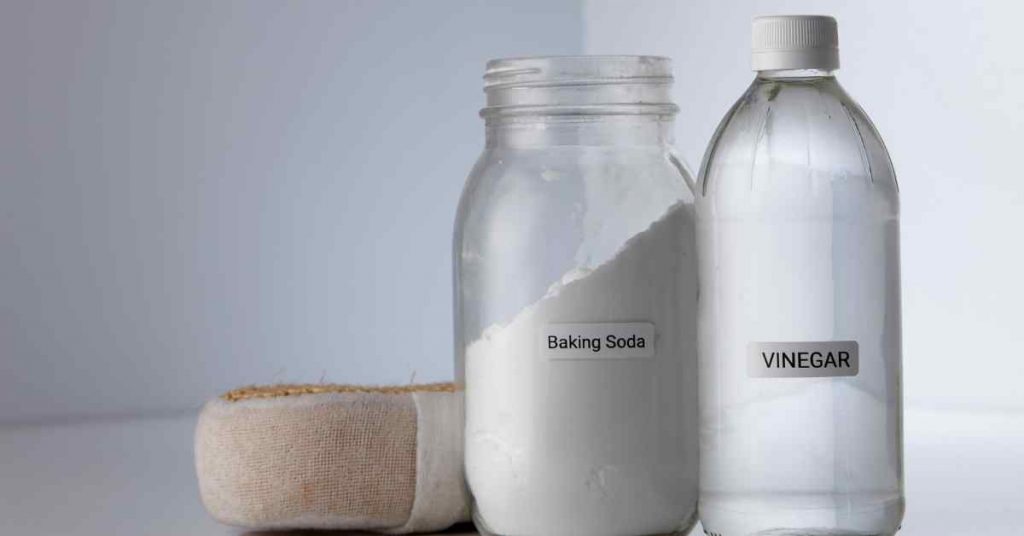
Baking soda and vinegar have been used for ages with a high success rate to clear drain clogs. Vinegar is a weak acid while baking soda is a base/alkali.
When the 2 products are mixed together, they react in a fizzing reaction. It is this reaction which ultimately breaks down the clog effectively clearing the drain.
Unknown to most people, boiling water will clear most drain clogs on its own. That is why plumbers advise homeowners to pour boiling water down the drains from time to time.
The hot water melts the gunk inside P-traps, preventing the drain from being completely clogged. Combining boiling water and salt like in this post works very well.
You can opt to use either baking soda and vinegar or boiling water but I prefer to combine all of them. Here is how to clear a slow draining using baking soda, vinegar and boiling water:
- Start by draining standing water. If you have standing water in the problematic fixture, give it time for the water to drain out. That allows the baking soda and vinegar to work directly on the clog.
- Pour 1 cup of baking soda down the drain.
- Slowly pour another cup of vinegar down the drain. Vinegar reacts very fast with baking soda and hence the need to add the vinegar slowly.
- Wait for about 15 minutes for the solution to break down the gunk.
- Meanwhile, start boiling about a gallon or more of water.
- Dump the boiling water down the drain.
- Check how first the fixture drains.
As I mentioned earlier, baking soda and vinegar will break down the clog but boiling water will melt it further and flush it down the down.
Note: Because the china used to make toilets expands and cracks easily, don’t use boiling water to clear a slow draining toilet. Normal hot water from a faucet will do the job.
2. Clean the P-trap
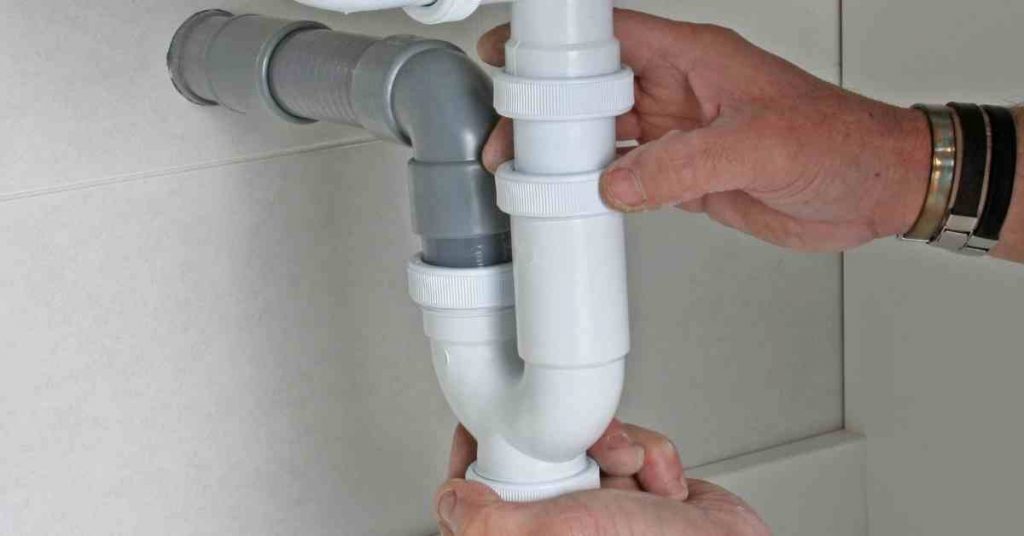
As I mentioned earlier, removing and cleaning the P-trap is the best and easiest way to clear/unclog a slow draining bathroom or kitchen sink.
A P-trap is the U-shaped bend under your sink. It has 2 functions:
- It holds water at all times which acts as a barrier preventing sewer gases from coming up to the house. Just like the water you have at the bottom of the toilet bowl.
- It traps solids which would have otherwise clogged the drain line farther away. It is way easier to unclog a P-trap that unclogging the drain line.
Actually, all fixtures in your house have a P-trap. It is just that the P-trap in your shower, bathtub or washing machine drains are not easily accessible as those of sink drains.
Here is how to clean a P-trap:
- Place a bucket under the P-trap. That will help you drain the water already in the P-trap instead of spilling it on the floor.
- Disconnect the P-trap connections. The P-trap has a short arm and a long arm. Start by disconnecting the short arm so that all the water can drain out via gravity.
Note: In most cases and especially when you have a plastic drain line, the P-trap connections are hand-tight. You therefore don’t need to use a wrench unless the connections are too tight. Even when you must use a wrench, be very gentle so as not to damage the threads.
- With the P-trap out, try to remove as much gunk as you can with your hand. That can be very gross especially in the case of the bathroom sink.
- Use a flexible wire brush to clean the inside of the P-trap using warm soapy water until the gunk has been completely removed.
- Connect the P-trap back to the drain line.
- Plug off the sink drain and fill it with water.
- Unplug the sink drain and check how fast it is now draining and also if there are any leaks around the P-trap connections.
Cleaning a P-trap is usually a sure way to unclog a slow draining sink.
3. Plunge the Drain

Plunging is one of the best ways to unclog a slow draining fixture. You however should do it the right way if you are to stand any chance of clearing the drain.
The first step is to choose the right plunger. There are 2 main types of plungers; flat-bottomed plungers and flange plungers.
Flange plungers are specifically designed to clear clogs from toilet drains. The small opening at the bottomed fits perfectly around the opening at the bottom of the bowl.
Flat-bottomed plungers are used to clear clogs from all other types of drains. Do not however use the same plunger to plunge kitchen sink drain and bathroom fixtures for hygienic reasons.
To plunge effectively, you need to have water in the fixture you are unclogging. Ideally, the rubber part of the plunger needs to be immersed in water to create proper suction.
Another thing to remember is that sinks and bathtubs have overflow drains. The overflow drains are also connected to the main drain line.
As such, you need to first plug off these overflow drains before you can start plunging. If you don’t do it, the pressure generated by the plunger will escape through these drains and you will most likely not clear the drain.
When plunging, place the plunger over the drain opening and start plunging gently. That allows the plunger to properly engage on the fixture and also prevents the water from splashing on you.
After the few gentle plunges, start plunging aggressively for a few minutes without lifting off the plunger.
Lift off the plunger and check if the fixture is draining as fast as it should. Plunge some more if you need to.
4. Use a Drain Hair Removal Tool
Needless to say, bathroom fixtures like bathroom sinks, showers and bathtub drains are usually clogged by hair. Hair combines with shampoo, soap scum and oils to form a clingy ball which sits at the P-trap restricting the flow of water.
A drain hair removal tool, also known as a zip-it tool is a flexible plastic snake with hooks on both ends that you simply push down the problematic fixture, twist it around then pull it out.
The hooks on the snake will grab the hair from the P-trap and remove it from the drain line. You will however need to push it in and pull it out a few times before you can remove all the hair.
Blast hot water down the drain after pulling out the hair to flush down whatever that is still trapped inside the drain.
If you can’t easily get this tool, a wire coat hanger will work just fine. Straighten the wire coat hanger then use pliers to make a hook on one end. Use the hook to pull hair from the drains.
5. Snake the Drain

Drain snaking is not easy since you risk punching a hole on the drain line using the drain head but when done right it is very effective in pulling out drain clogs.
When snaking a bathtub drain, the best think is to do it via the overflow drain opening. Start by removing the overflow drain plate using a screwdriver. If you have a trip-level stopper pull it out as well.
To snake a bathroom or kitchen sink, removing the P-trap gives you an easy access to the drain pipe. That way, you don’t need to remove the sink stopper or have to force the snake through the P-trap.
To properly snake a drain, push the snake down the drain line until you encounter resistance. Lock the cable and start cranking the handle until you go past the restriction.
Release more cable and continue pushing it down the drain to make sure there are no more clogs. Find more details on how to snake a drain in this post.
Snaking a toilet drain is a little different, and that is why there is a special toilet drain snake called a toilet auger.
A toilet auger is designed in such a way that you will not end up badly scratching your toilet bowl when snaking it. That is made possible by a bowl guard which allows you to pull the cable all the way back until the auger head is at the bowl guard.

Place the bowl guard and auger head carefully at the bowl’s opening at the bottom of the bowl then start pushing the cable down the drain line.
When you are done snaking the toilet drain, place the bowl guard again at the bottom of the toilet bowl then start pulling out the cable until the auger head is firmly at the bowl guard.
What if You Have Multiple Slow Drains?
Every fixture in the house has its own drain line. All these separate drain lines are then connected to waste/soil stack which then drains out to the sewer line.
If you have multiple slow drains, you most likely have a clogged waste stack or sewer line. To unclog the sewer line you will need to hire a long motorized snake if you don’t want to buy one.
There are 2 ways to remove the clog depending on its location. You can do it from the sewer cleanout or from the toilet drain line.
Unlike other fixtures, a toilet drain line is large which makes it ideal for snaking the main line. Alternatively, you can climb to the roof of the house and snake the main line from there.
You will however need to start by removing the toilet. Please note that you need a new wax ring when reinstalling the toilet later.
Sometimes the reason you have multiple slow drains is because you have a tree roots in your sewer line which restricts the flow of wastewater. You however can’t figure that out on your own.
If you can seem to fix the problem yourself, just hire a plumber to inspect your sewer system and even clean it if need be.
6. Unclog the Plumbing Vent
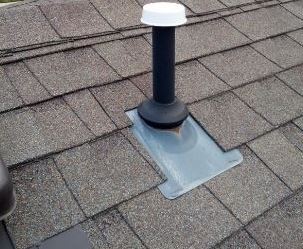
A plumping vent is the vertical pipe running through the roof of your house. It is connected to the main waste stack for 2 reasons:
- Remove sewer gases from the drain lines
- Introduce air into the drain lines.
If the plumbing vent is clogged, air will not be introduced to the drainage system, resulting in the creation of negative air pressure inside the drain lines. When that is the case, your fixtures will drain slowly and your toilets will have a weak flush.
It is however important to mention that a plumbing vent will affect all fixtures and not just one of them (unless that fixture is using an individual vent like an air admittance valve).
To unclog a vent, climb to the roof of the house and snake it using a garden hose. If a garden hose doesn’t work upgrade to a plumber snake. Find more details on that here.
Should You Use Chemical Drain Cleaners to Clear Slow Drains?

I do not encourage the use of chemicals drain cleaners to unclog drains for the reason I outlined in this post.
To start with, chemical drain cleaners work by releasing so much heat which is what melts the clog. The problem is that the heat is so high that it can soften PVC pipes, melt the glues used to join the pipes and even weaken steel pipes.
Chemical drain cleaners are also not septic-safe. They will interfere with the bacteria in your septic tank resulting in clogged drain fields or backing up sewage.
Another reason not to use chemical drain cleaners is their impact on the environment. Not only do the chemicals negatively impact marine life and ground water but the plastic bottles also end up in landfills.
If you have tried everything I have outlined in this post unsuccessfully, the best thing for you to do would be to contact a professional plumber. Plumbers have better tools and years of experience and therefore know exactly what needs to be done to clear the drain.



